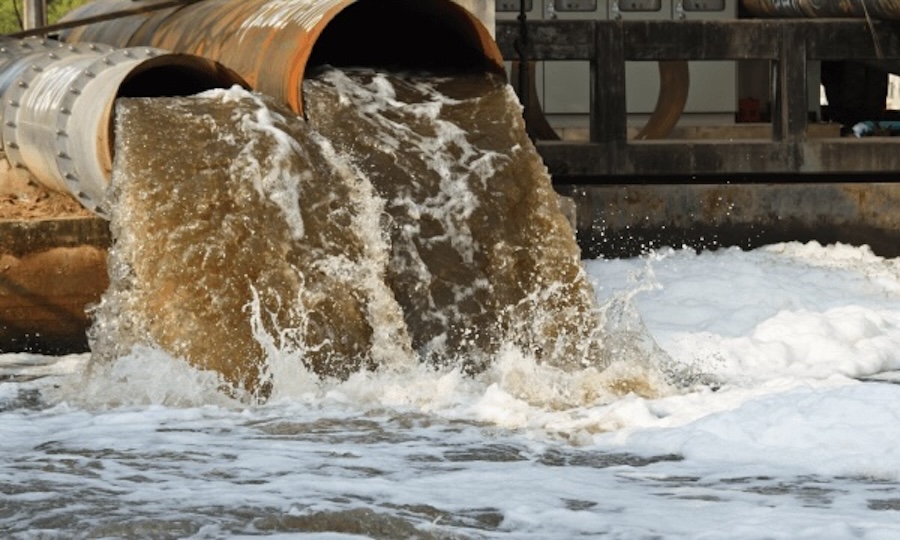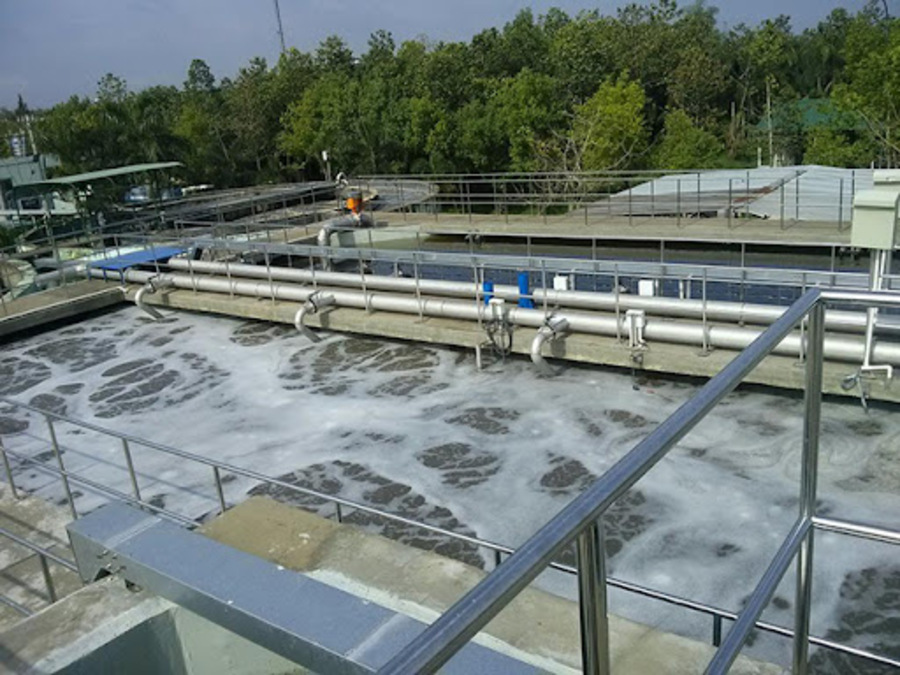Wastewater flow rate is a necessary technical parameter when designing, constructing, or operating a wastewater treatment system. Accurate calculation of the flow rate ensures stable operation, proper equipment selection, and compliance with legal requirements in environmental documentation. This article provides you with the most complete and detailed knowledge about how to calculate wastewater flow rate, including common types, units of measurement, and simple calculation methods.
Wastewater flow rate is the measure of the volume of wastewater flowing through a given cross-section in a specific unit of time, commonly expressed in m³/day, liters/second (L/s), or m³/hour. This is a fundamental and important parameter in the design, operation, and control of drainage and wastewater treatment systems. This concept should be clearly distinguished from the total wastewater volume, which is the accumulated volume of wastewater over a specific period.
Accurate calculation of wastewater flow rate is crucial for system design and technology selection. If the flow rate is estimated incorrectly, the system can easily become overloaded or have excess capacity, resulting in poor treatment efficiency, increased investment costs, and higher operational expenses. Moreover, the flow rate is the basis for determining tank dimensions, pump capacity, water retention time, and the treatment efficiency of each stage. It is especially important for environmental reports such as Environmental Impact Assessments (EIA) or wastewater discharge permit applications.

Learning about wastewater flow rates in current treatment systems
This type comes from daily human activities such as bathing, laundry, sanitation, and cooking in households, residential areas, hotels, schools, or hospitals. The calculation is usually based on the number of users and the average wastewater generation rate per person according to design standards (typically 100–200 liters/person/day). Domestic wastewater generally has high organic content and requires effective biological treatment.
Industrial wastewater flow rate depends on the type of production, technological process, number of work shifts, and water consumption in each stage. Each industry has different wastewater generation coefficients (e.g., food processing, textile dyeing, chemical industries), so surveys or data from measuring devices or water bills are necessary for accurate calculation. Industrial wastewater usually contains diverse pollutants such as heavy metals, chemicals, or persistent organic substances.
Rainwater flow rate is considered in combined drainage systems, especially in urban areas, industrial parks, or large facilities with low infiltration surfaces. Calculation is often based on the catchment area, design rainfall intensity, and runoff coefficient using hydrological formulas. While rainwater is not typically heavily polluted, large volumes can overload systems if not properly accounted for.

Summary of types of wastewater flow rates today
Calculating wastewater flow rate is the first and most important step in designing, constructing, or upgrading treatment systems. Depending on the source (domestic, industrial, or rainwater), various methods can be applied, from standard-based estimation to direct measurement with specialized equipment. Common and simple methods include:
a. For Domestic Wastewater:
Formula:
Q=N×qQ = N \times qQ=N×q
Where:
Example:
A residential area with 200 people, generating 120 L/person/day:
Q=200×120=24,000 L/day=24 m³/dayQ = 200 \times 120 = 24,000 \ \text{L/day} = 24 \ \text{m³/day}Q=200×120=24,000 L/day=24 m³/day
b. For Industrial Wastewater:
Formula:
Q=q×SQ = q \times SQ=q×S
Where:
Example:
A food processing factory produces 10 tons/day, with q = 1.2 m³/ton:
Q=10×1.2=12 m³/dayQ = 10 \times 1.2 = 12 \ \text{m³/day}Q=10×1.2=12 m³/day
Flow rate calculation forms the basis for designing pipes, channels, manholes, and storage tanks. Incorrect estimation can cause blockages or flooding during peak hours, leading to safety hazards and environmental pollution.
Flow rate determines the operational capacity of treatment equipment such as pumps, equalization tanks, sedimentation tanks, and biological treatment units. Correctly sized equipment ensures stable operation, reduces investment costs, and minimizes breakdown risks.
Flow rate is a mandatory parameter in environmental reports like Environmental Impact Assessments, Environmental Protection Plans, or wastewater discharge permit applications. Authorities use it to assess pollution levels and ensure businesses comply with relevant standards.
Tracking wastewater flow rate allows operators to maintain stable system performance and quickly detect issues like leaks, overloading, or reduced capacity. This data also helps evaluate treatment efficiency and plan maintenance or system upgrades over time.
Accurately determining wastewater flow rate not only optimizes system design and operation but also plays a key role in environmental compliance. Whether it is domestic, industrial, or rainwater wastewater, each type has its own calculation method and should be carefully assessed before project implementation. Hopefully, this article has helped you clearly understand the concepts, formulas, and practical applications for effective and precise wastewater flow rate calculation.